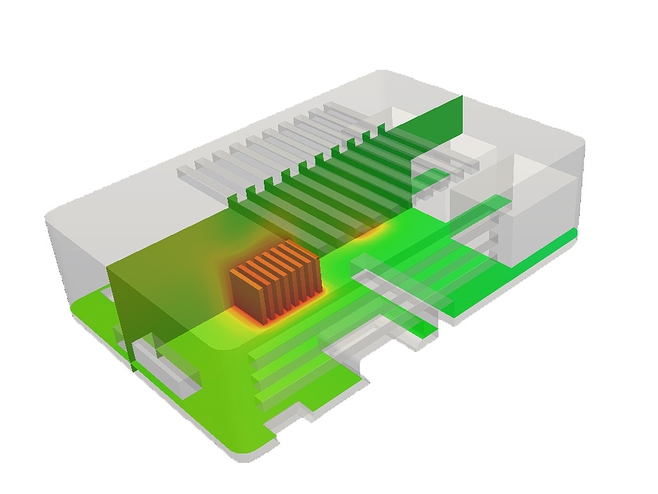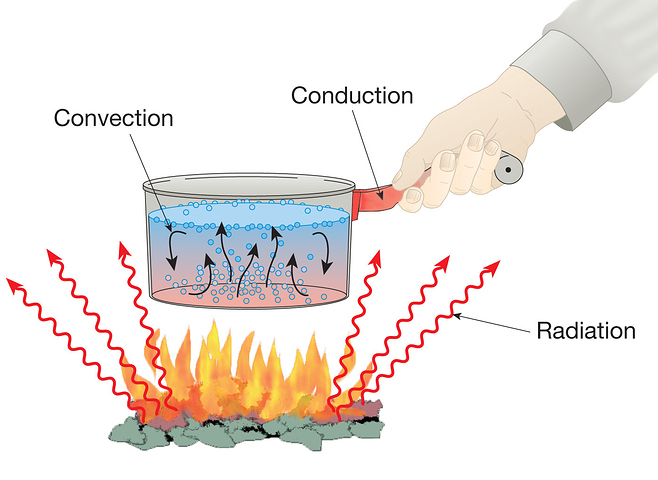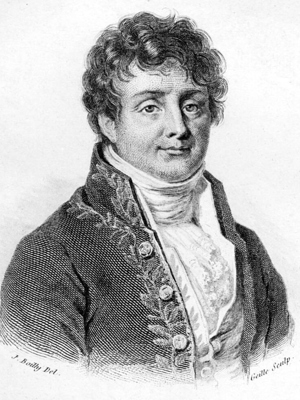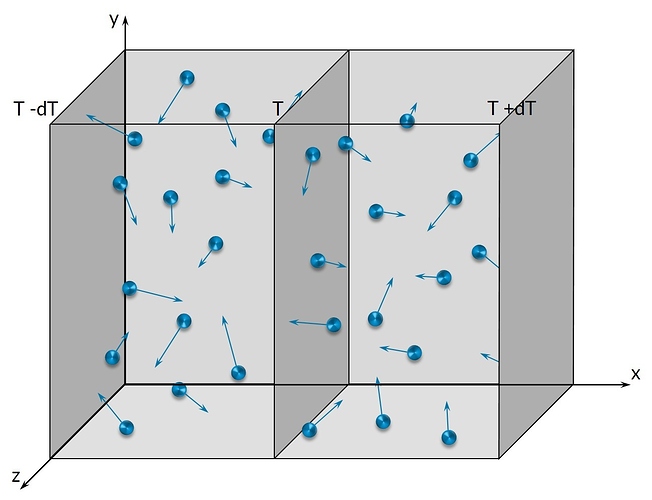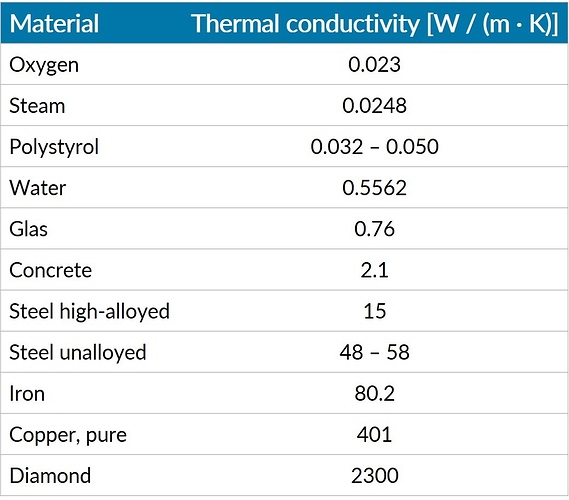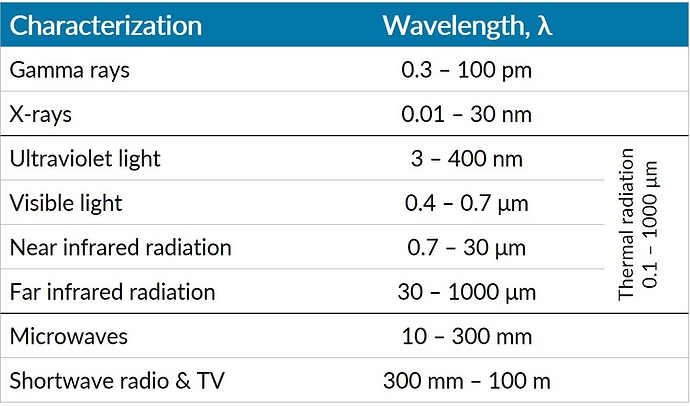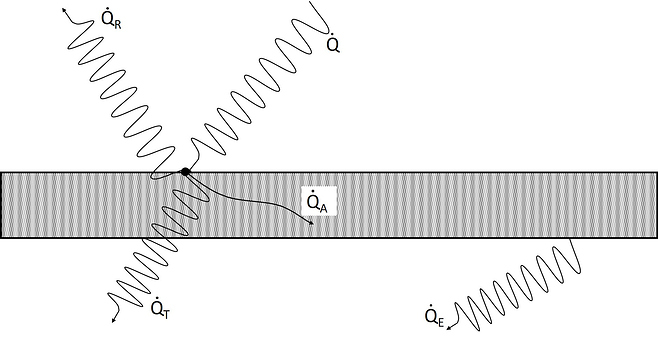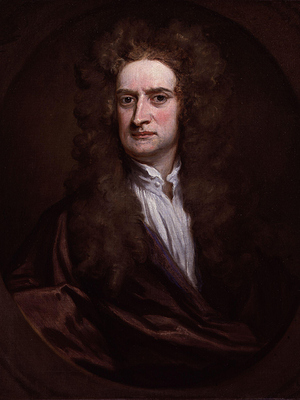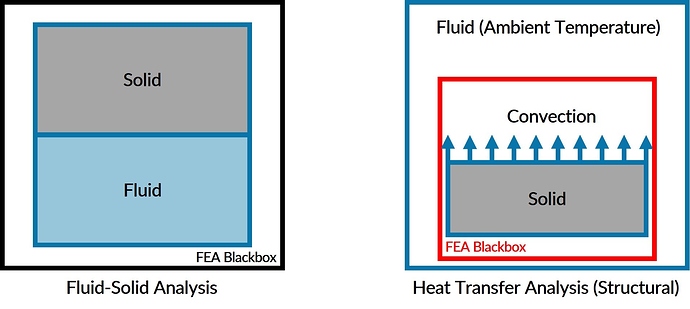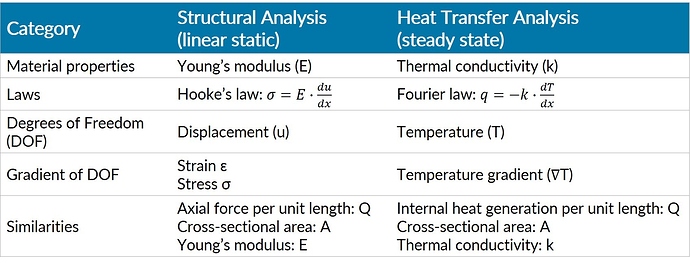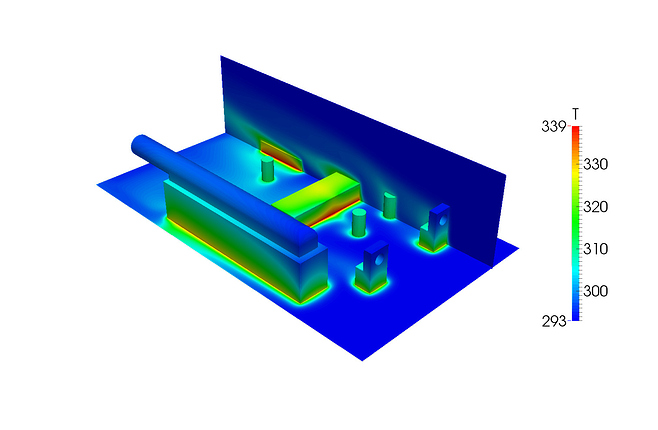What is Heat Transfer
In general, heat transfer describes the flow of heat (thermal energy) due to temperature differences and the subsequent temperature distribution and changes.
The study of transport phenomena concerns the exchange of momentum, energy and mass in the form of conduction, convection, and radiation. These processes can be described via mathematical formulas.
The fundamentals for these formulas are found in the laws for conservation of momentum, energy and mass in combination with constitutive laws / relations that describe not only the conservation but also the flux of quantities involved in these phenomena. For that purpose, differential equations are used to describe the mentioned laws and constitutive relations in the best way possible. Solving these equations is an effective way to investigate systems and predict their behavior.
Figure 1:
History and terminology
Without external help, heat will always flow from hot objects to cold ones which is a direct consequence of the second law of thermodynamics.
We call that heat flow. In the early nineteenth century, scientists believed that all bodies contained an invisible fluid called caloric (a massless fluid thought to flow from hot to cold objects). Caloric was assigned properties, some of which proved to be inconsistent with nature (for instance it had weight and it could not be created nor destroyed). But its most important feature was that it was able to flow from hot bodies into cold ones. That was a very useful way to think about heat.
Thompson and Joule showed that this theory of the caloric was wrong. Heat is not a substance as supposed, but a motion at the molecular level (so called kinetic theory). A good example is rubbing our hands against each other. Both hands get warmer, even though initially they were at the same cooler temperatures. Now if the cause of the heat was a fluid, then it would have flowed from a (hotter) body with more energy to another with less energy (colder). Instead, the hands are heated because the kinetic energy of motion (rubbing) has been converted to heat in a process called “friction”. ^5
The flow of heat is happening all the time from any physical entity to objects surrounding it. Heat flows constantly from your body to the air surrounding you. Small buoyancy-driven (or convective) motion of the air will continue in a room because the walls can never be perfectly isothermal as in theory. The only domain free from heat flow would have to be isothermal and completely isolated from any other system allowing heat transfer.
The cooling of the sun are the primary processes that we experience naturally. Other processes are the conductive cooling of Earth’s center and the radiative cooling of other stars. ^1
Phenomenology
Heat Transfer is transmission of thermal energy due to a gradient in temperature.
Heat Transfer Methods
Figure 2:
Conduction
Fourier’s law: Joseph Fourier (see Figure 3) published his book “Théorie Analytique de la Chaleur” in 1822.
Figure 3:
In this book he formulated a very complete theory of heat conduction. He stated the empirical law that bears his name: the heat flux (indicated with q - a heat rate per unit area and can be expressed as \frac{Q}{A}), q (W/m^2), resulting from thermal conduction is proportional to the magnitude of the temperature gradient. If we name the constant of proportionality, k, that means
The constant, k, is called the thermal conductivity with the dimensions \frac{W}{m*K}, or \frac{J}{m*s*K}.
Please keep in mind that the heat flux is a vector quantity! Equation (1) tells us that, if temperature decreases with x, q will be positive - it will flow in positive x-direction. If T increases with x, q will be negative; it will flow in negative x-direction. In either case, q will flow from higher temperatures to lower temperatures as already mentioned in the introductory paragraph. Equation (1) is the one-dimensional formulation of Fourier’s law. The three-dimensional equivalent form is:
where \nabla indicates the so called gradient.
In one-dimensional heat conduction problems, there is no problem to tell in which way the heat flows. For that reason, it is often convenient to write Fourier’s law in simple scalar form:
where L is the thickness in the direction of heat flow and q and \Delta T are both written as positive quantities. We just have to keep in mind that q always flows from high to low temperature.^1
The thermal conductivity of gases can be understood with the imagination of molecules. These molecules move through thermal movement from one position to another position as can be seen in the picture below.
Figure 4
The internal energy of the molecules is transferred by impact with other molecules. Areas with low temperature will be occupied by molecules of high temperature and areas with high temperature will be occupied by molecules of lower temperature. The thermal conductivity can be explained with this imagination and be derived with the kinetic theory of gases:
which states that “the average molecular kinetic energy is proportional to the ideal gas law’s absolute temperature”. ^7 For an ideal gas the thermal conductivity is independent from the pressure and increases with the root of the temperature.
This theory is pretty hard to understand for objects other than metals. And for fluids it is even more difficult because there is no simple theory. In nonmetallic components, heat transfers via lattice vibrations (Phonon). The thermal conductivity transferred by phonons also exists in metals but surpassed by the conductivity of the electron gas.
The low thermal conductivity of insulating materials like polystyrene or glass wool is based on the principal of the low thermal conductivity of air (or any other gases).
Table 1:
Analogous definitions
Heat Transfer: Heat flux density \propto grad T (Thermal conductivity)
Diffusion: Partial current density \propto grad x (Diffusion coefficient)
Electric lead: Current density \propto grad U_{el} (Electric conductivity)
Radiation
Radiation describes the phenomenon of transmission of energy from one body to another by propagation through a medium. All bodies constantly emit energy by electromagnetic radiation. The intensity of such energy flux depends not only on the temperature of the body but also on the surface characteristics. If you sit in front of a camp fire, most of the heat that reaches you is radiant energy. Very often, emission of energy, or radiant heat transfer, from cooler bodies can be neglected in comparison to convection and conduction. Heat transfer processes happening at high temperature, or with conduction or convection suppressed by evacuated insulation, involve a significant fraction of radiation in general$^1$.
The electromagnetic (EM) spectrum: This spectrum is the range of all types of electromagnetic radiation. Simply put, radiation is energy travelling and spreading out like photons being emitted by a lamp or radio waves. Other well known types of electromagnetic radiation are X-Rays, gamma-rays, microwaves, infrared light etc. ^8
Electromagnetic radiation can be seen as a stream of photons, each traveling in a wave-like pattern, moving at the speed of light and carrying energy. The difference between the different forms in the electromagnet spectrum is the energy of the photons. It is important to keep in mind that if we talk about the energy of a photon, the behavior can either be that of a wave or that of a particle which we call the “wave-particle duality” of light.
Each quantum of radiant energy has a wavelength, \lambda and a frequency, \nu, associated with it. The relation between energy, wavelength, \lambda and frequency, \nu, can be written as wavelength equals the speed of light divided by the frequency, or
and energy equals Planck’s constant times the frequency, or
where h is Planck’s constant (6,626 070 040 * 10^{-34} Js ).
The picture below shows various forms over a range of wavelengths.
Table 2:
If radiation meets a body or a fluid it will be:
- reflected
- transmitted
- absorbed
A body itself can also emit radiation
Figure 5:
where
Black Body: \quad \alpha^S = 1 \quad \rho^S = 0 \quad \tau^S = 0
Gray Body: \quad \alpha^S, \rho^S and \tau^S uniform for all wavelengths.
White Body: \quad \alpha^S = 0 \quad \rho^S = 1 \quad \tau^S = 0
Opaque Body: \quad \alpha^S + \rho^S = 1 \quad \tau^S = 0
Transparent Body: \quad \alpha^S = 0 \quad \rho^S = 0 \quad \tau^S = 1
Black body: “Blackbody radiation” refers to an object or system in thermodynamic equilibrium which absorbs all incoming radiation and emits energy of a characteristic, temperature dependent spectrum. This behavior is specific of this radiating system only and is not dependent on the type of radiation which is incident upon it.
Stefan-Boltzmann law. The thermal energy radiated by a blackbody radiator per second per unit area is proportional to the fourth power of the absolute temperature and is given by:
where \sigma is the Stefan-Boltzmann constant which can be derived from other constants of nature:
For hot objects other than ideal radiators, the law is expressed in the form:
where e is the emissivity of the object (e = 1 for ideal radiator). If the hot object is radiating energy to its colder surroundings at temperature T_c, the net radiation loss rate takes the form:
Due to the fourth power of the temperatures in the governing equation, radiation becomes a very complex, high-level nonlinear phenomenon.^2
Convection
Consider a convective cooling situation. Cold gas flows past a warm body as shown in the figure below.
Figure 6:
The fluid forms immediately adjacent to the body a thin slowed-down region called a boundary layer. Heat is conducted into this layer, which vanishes and mixes into the stream. We call this process of carrying heat away by a moving fluid convection.
Figure 7:
Isaac Newton (1701) considered the convective process and suggested a simple formula for the cooling:
where T_\infty is the temperature of the oncoming fluid. This expression proposes that energy is flowing away from the body.^1
The steady-state form of Newton’s Law of cooling defining free convection is described by the following formula:
where h is the heat transfer coefficient. This coefficient can be denoted with a bar \overline{h} which indicates the average over the surface of the body. h without a bar it denotes the “local” values of the coefficient.
Depending on how the fluid motion is initiated, we can classify convection as natural (free) or forced convection. Natural convection is caused for instance by buoyancy effects (warm fluid rises and cold fluid falls). In the other case, forced convection causes the fluid to move by external means such as a fan, wind, coolant, pump, suction devices, etc.
Forced convection: The movement of a solid component into a fluid can also be considered as forced convection. Natural convection can create a noticeable temperature difference in a house or flat. We recognize this because certain parts of the house are warmer than others. Forced convection creates a more uniform temperature distribution and therefore comfortable feeling throughout the entire home. This reduces cold spots in the house, reducing the need to crank the thermostat to a higher temperature.^3
CFD Heat Analysis — Structural Heat Transfer
Figure 8:
Structural Heat Transfer Analysis is used when:
-
The fluid temperature can be assumed to be homogeneous around the solid part
-
Investigating the behavior of structural components only under heating
-
Investigating stress and deformation by the part caused by the heat load (thermal stress analysis)
Coupled Heat Transfer Analysis (Fluid-Solid) used when:
-
The fluid distribution around the solid needs to be studied
-
Investigating the influence of the object
-
Investigating natural cooling
Heat Transfer Analysis — Linear Static Analysis
Table 3:
Applications of Thermal Analysis
Figure 9:
Thermal - Structural Analysis
Heat Transfer takes the energy balance of the studied systems into account. When investigating thermomechanical components, structural deformations, caused by the effects of thermal loads on solids can also be included. Simulating the stress response to thermal loads and failure is essential for many industrial applications.
An example for an application is a thermal stress analysis of a Printed Circuit Board.
Conjugate Heat Transfer
Conjugated Heat Transfer (CHT) simulations analyze the coupled heat transfer in fluids and solids. The prediction of the fluid flow while simultaneously analyzing the heat transfer that takes place within the fluid/solid boundary is an important feature of CHT simulations.
One of the areas in which it can be used is for [electronics cooling][Deleted].
Conduction
In theory, heat passes from a hot to a cold object. Conduction is the heat transfer from a hot to a cold object, that are in direct contact to each other. The thermal conductivity of the different objects decides how much heat in which time is being transferred.
Examples include CFL light bulbs.
Convection
Convective Heat Transfer is the transfer of heat between two areas without physical contact. Convective currents occur when molecules absorb heat and start moving. As you can imagine, these effects are difficult to predict which is why high computing power is needed to obtain reliable results from a simulation.
One application is the cooling of a Raspberry pi mother board.
Radiation
Electromagnetic waves are the source of heat transfer through radiation. They usually play a role at high temperatures. The amount of heat that is emitted via radiation depends on the surface type of the material. A general rule is that the more surface there is, the higher the radiation is.
An example application where simulation of radiation is used, is the simulation of laser beam welding.
Thermal Analysis & SimScale
Many materials and products have temperature-dependent characteristics which makes analyzing the impact of heat and ensuring thermal management of structures and fluids crucial in product development. The Heat Transfer Module of SimScale’s online simulation platform allows you to predict the airflow, temperature distribution and heat transfer. This involves convection, conduction and radiation to ensure the performance, endurance and energy efficiency of your designs.
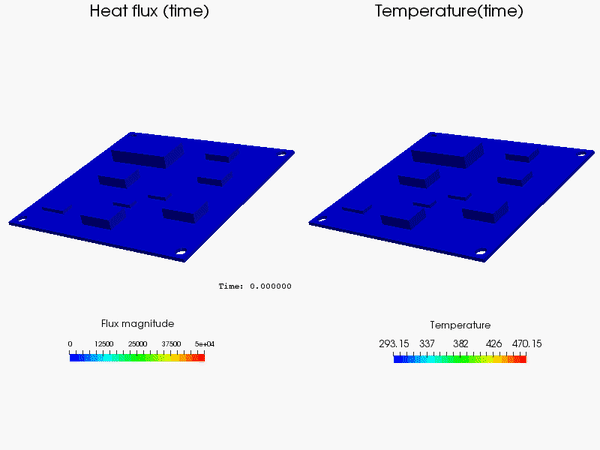
Animation 1:
Related topics:
- The Joule Heating Effect
- The Joule-Thomson Effect

